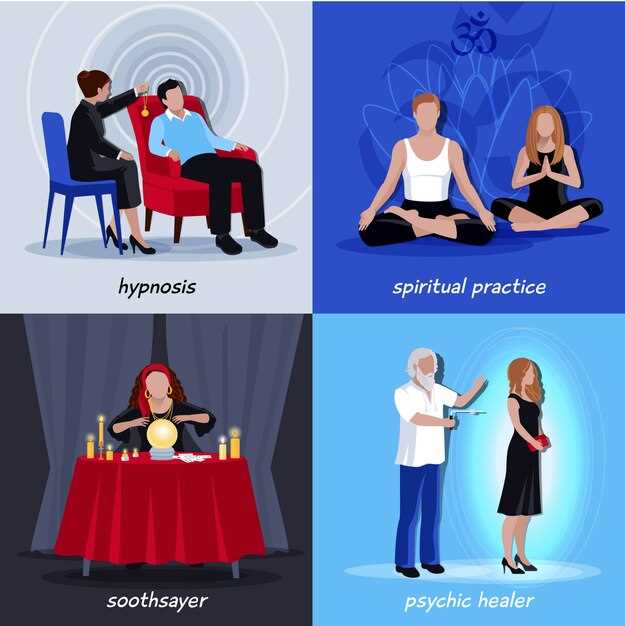Begin with a 10-minute mindful check-in to observe mood, not react to it. This approach flows from evidence showing awareness cuts impulsive choices. Use a simple 0–10 scale to note energy, sleep, appetite; track status over weeks to see patterns. Many people report mood fluctuations during changes in status; awareness helps soften ambivalence, reduce loss. This process can ensure you stay aligned with what you value rather than chase quick validation on apps.
Choose concrete activities to fill silence. After work hours, join a class; take a walk; volunteer; these experiences boost mood, widen social circles, reduce loss. When you chose to shift patterns away from chasing status in apps, you gain mastery over daily life. Keep a simple log of experiences to document progress; this источник becomes evidence that change is possible.
Preserve healthy relationships by staying open to change. Regular check-ins among trusted friends provide a stable base; a great way to monitor ambivalence, mood shifts, fear of loss. A plan to stay connected reduces the lure of rushed commitments. If a social circle feels stale, leave a few apps; the point is to create ongoing connection beyond screens.
Focus on finding meaning in daily routine. A mindful approach means noticing what sustains you besides romance: hobbies, skill-building, volunteering. Researchers report that deliberate attention to values reduces ambivalence; it helps turn loss into a signal for change. What matters is consistency; a small, reliable practice each day builds resilience.
Reframe setbacks as data rather than failure. Each experience offers lessons: what you observed, what you chose, what you will adjust. Treat past relationships as sources of insight; they gave clues about preferences, boundaries, what you value in care. This mindset lowers self-judgment, keeps you moving toward meaningful connections.
Maintain a practical plan for daily vitality. Sleep, nutrition, movement matter; ensure regular meals, light exercise, sunlight. If you face ambivalence, schedule a weekly meetup; progress is often cumulative, not instant. The status you hold today is a point you chose; stay consistent yields growth, not abrupt life changes.
Practical, Actionable Guide for Singles
Begin with a concrete daily routine that prioritizes self-care and social connection. theres a simple truth: small, steady steps beat big, sporadic bursts. A thing to remember: your days stay steadier when you build a routine around three pillars: movement, learning, and contact with others. This approach has worked along years for many people, and it is designed to be sustainable rather than a quick fix.
Make a weekly plan with concrete targets: two 30-minute workouts, one learning block, and one check-in with a friend. The thing is to start small and stay consistent. If youre using apps to connect, pick 1-2 platforms and limit scrolling time to a maximum 20 minutes per day to avoid fatigue. Reach out to someone you havent spoken to in a while and offer a quick check-in; this creates opportunity to rebuild connection and support.
Build your support by inviting one friend to a regular activity, like a walk, a class, or a coffee. Been consistent with invitations matters: the more you make them happen, the more likely you are to maintain relationships long term. To ensure momentum, set a recurring plan for the same day each week and track what worked.
Use practical self-checks to monitor mood and energy. Check in each evening: what helped you today, what drained you, and what you want to do differently tomorrow. Stay curious about your feelings, and write 1-2 sentences in a short journal; this builds yourself resilience and gives you a reference for years to come.
Take on a small project that gives you a sense of purpose: volunteer, learn a skill, or mentor someone. This is an opportunity to meet new people, stay engaged, and build a steady source of value – istредничний источник of calm when days feel long.
Make sure to track progress toward your goals. Reached micro-milestones, like maintaining a habit for a full week, then celebrate with a simple reward. Youre making progress–and many years have shown that momentum grows when you keep showing up for yourself.
Label Emotions Quickly to Reduce Overwhelm
Label emotions within 5 seconds after they surface; choose just a one-word label such as sad, anxious, or frustrated.
This quick labeling reduces mental load; likely preventing escalation in tense moments; instead, it supports healthier reacting patterns.
Use a 3-step routine: name the feeling; assess its health impact; choose a next move that restores balance.
In a team context, labeling becomes a shared practice, redefining their status quo toward closure.
Here is a starter set of labels to begin with: fear, sadness, anger, anxiety, frustration, loneliness, relief, hope, excitement.
embrace their emotions; accepting the status; redefining balance; leaving behind patterns that harm health; this is a vital step.
Finding closure becomes likely; the label made space for a clearer next move; mood improves.
Rather than dwelling, leave behind leftovers; those patterns never serve.
Handle triggers here without stepping into overload.
Together this becomes a team practice; progress feels tangible.
| Emotion | Label | Quick Move |
|---|---|---|
| Fear | Fear | Name; 3 breaths; observe |
| Loneliness | Loneliness | Name; brief contact plan |
| Anger | Anger | Name; pause; reset pace |
| Hope | Hope | Name; breathe; reorient |
Build Daily Routines That Fight Loneliness
Schedule a 20-minute morning check-in to set balance as a theme for the day; note one specific area where you could grow; write a thought you want to reframe later.
- Morning check-in: set balance as a theme for the day; list one personal goal; choose a specific action; record a thought that could block connection; reframe it into a plan for a small interaction.
- Midday contact: reach out to one other person; propose a 10-minute chat; mention an experience you would be discussing.
- Evening reflection: recount three moments of happiness here; consider personal progress; discussing whether you want more support tomorrow.
- Weekly trips or experiences: schedule a brief outing in an area new to routine; choose something different; note what experiences moved you toward belonging; this can feel rewarding.
- Self care moment: allocate a cuddle by a pet or a hug from a friend; weave a ritual such as a warm drink, a short walk, or music that supports mood.
There is value in small steps; usually these routines become part of a whole that helps you feel less unable to connect; those small steps could transform private experiences into shared moments; you deserve happiness; these routines help you build balance in personal areas of life; a trusted source said small routines matter.
Remap Self-Worth Beyond Relationship Status
Make this one change today: think of your value as whole, independent of whether you’re dating or single. This awareness usually dissolves the habit of defining yourself by a partner’s presence. Here you start validating yourself through actions, not status.
If isolation hits, enter a small action that demonstrates capability: step into a new activity, start a project, or reconnect through someone you know in the community. Each stepping small shows you can build meaning without relying on others. You are not alone. This can be done together alongside a friend.
There is meaning in private progress; when you learn new skills, you turn failure into feedback, proving to yourself that you matter for reasons that have nothing to do with a partner, a path of learning. Your value rests on more than a single moment; it is not only about romance. Here, learning is a gradual expansion of your sense of self.
Building a routine that reinforces autonomy helps you feel free. Do something tangible each day that you can point to as evidence of your capability; build something, finish a project, or deepen a hobby. Choose this path; it feels better rather than chasing external praise.
If you chase respect from others, you risk a fragile sense of self. Instead, cultivate standards that you can meet yourself. The result is steady confidence that makes future connections stronger. Thats the point: your value comes from inside, not from external validation. A person who would respect your independence will attract the right kind of attention.
Building relationships is one dimension, but you also need to invest in non-romantic ties. Meet a friend for coffee, coach a youth group, or contribute to a cause. These steps improve your mood; they give you a metric beyond dating status, making you better prepared for authentic partners when they appear.
Here you can track progress: keep a simple log of three items each day–learning something new, helping someone, or stepping into a new environment. Over time, youll notice that your self-worth is not linked to a single outcome or relationship.
single status is a phase, not a verdict. Focus on building meaning in work, creativity, service; you move toward a freedom that makes you more resilient in any relationship you choose later. Needed resources are time, patience, support.
Use a Quick Thought Challenge to Reframe Rejection
Here starting this quick thought challenge, discussing negative feelings triggered by rejection not allowing them to define their view. What is the evidence supporting this belief; what contradictions arise? Look at two facts from recent interactions that contradict their belief, then note them here.
Never let this thing linger: write two brief statements that reframe the scene. Perhaps the focus was misread, perhaps a missed signal becomes a cue for learning. Look for small shifts, then transfer to a simple action that has been helpful for day-to-day interactions, just two points.
During times of isolation, engaging exercises help heal. Look at thoughts as passing weather; they linger then pass. Reframing shifts how interactions look, while mood stabilizes through practice, producing quick wins.
Engaging resources include books, reputable sources, trusted peers; this keeps you grounded here, there. Trace the источник of a belief to a concrete occasion–perhaps a tricky interaction, a memory reached during trips, or a remark from a peer; then reframe the meaning you assign.
Expand Your Social Circle with Small, Realistic Steps
Invite one person for a 30-minute walk this week. youll see a small change in mood, a rise in social confidence, a sense of possibility that fuels future plans. focus on steady momentum; each step helps you feel capable, to help reduce feelings of isolation.
- Decision: choose a single micro-goal each week; options include a meetup, a library talk, a book club session.
- Step 2: Focus on listening; craft one open question about a favorite book or hobby.
- Step 3: Stepping into shared spaces: join a local team, volunteer project, or workshop.
- Step 4: Create a simple calendar routine: attend two low-pressure events per month; note topics that spark interest; log feelings, what you learned.
- Step 5: Build a team around you; reach out to a few people, propose a joint activity, choose spaces where you feel comfortable.
Perhaps societal issues shape choices; accepting loss, grief surface as companionship shifts. Meaning comes through finding small moments of connection. youre not alone; myself I remind myself progress made rests on stepping, not leaps. Reaching milestones, you start to feel more capable, more skilled at finding meaning in everyday things. Gradual steps reached durable change in mood; relationships grow. focusing on what works helps you keep moving. Reading books about topics you enjoy supports meaningful conversations among those you meet.






